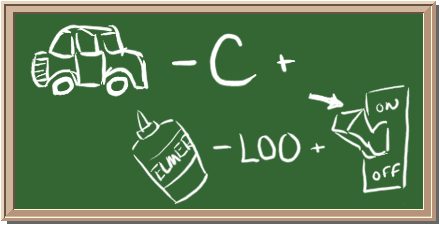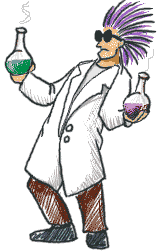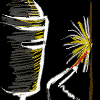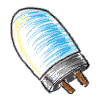
AR-GON
 It's funny how it took scientists until 1894 to discover the most common noble gas on Earth. That's right, argon (Ar) makes up a little over one percent of our atmosphere. Lord Rayleigh and Sir William Ramsay discovered and isolated argon gas, but we joke about how long it took. They could never have done it earlier, because the technology wasn't available. We say that today's scientists are on the cutting edge and discovering elements that will have atomic numbers over 120. A century ago, techniques used to discover argon were on the cutting edge. Because it is inert, you will find argon in light bulbs, welding, and vacuum tubes (although you probably don't know what those are).
It's funny how it took scientists until 1894 to discover the most common noble gas on Earth. That's right, argon (Ar) makes up a little over one percent of our atmosphere. Lord Rayleigh and Sir William Ramsay discovered and isolated argon gas, but we joke about how long it took. They could never have done it earlier, because the technology wasn't available. We say that today's scientists are on the cutting edge and discovering elements that will have atomic numbers over 120. A century ago, techniques used to discover argon were on the cutting edge. Because it is inert, you will find argon in light bulbs, welding, and vacuum tubes (although you probably don't know what those are).
Once isolated, argon was not that special. It has no smell and no color. It wound up as the last element in period three at position number eighteen. As usual, the last element in the row is a noble gas. Argon is in the same family as helium (He) and neon (Ne). For a long time, scientists thought that argon did not combine with any other elements. They were wrong. See? Even scientists don't always get the right answer!
Where can you find argon?

|
Welding If you see someone welding you should know that sometimes they use argon. Argon is non-reactive so it is a good element when you use really high temperatures. It makes things safer. |
|
|
Growing Crystals Argon is used to grow silicon crystals. When scientists grow silicon crystals it must be done in a pure environment. There can be no other elements that might combine with the silicon. Argon is used because it will not react with the silicon. |

|
Light Bulbs When you look in a light bulb it looks like there's nothing there. But there is! Argon is a gas that scientists put in light bulbs to help them work better. |

|
Vacuum Tubes When you look at a radio they are very small. Many years ago, radios used to be much larger and had big glass tubes inside. Those radio tubes were filled with argon gas. |




